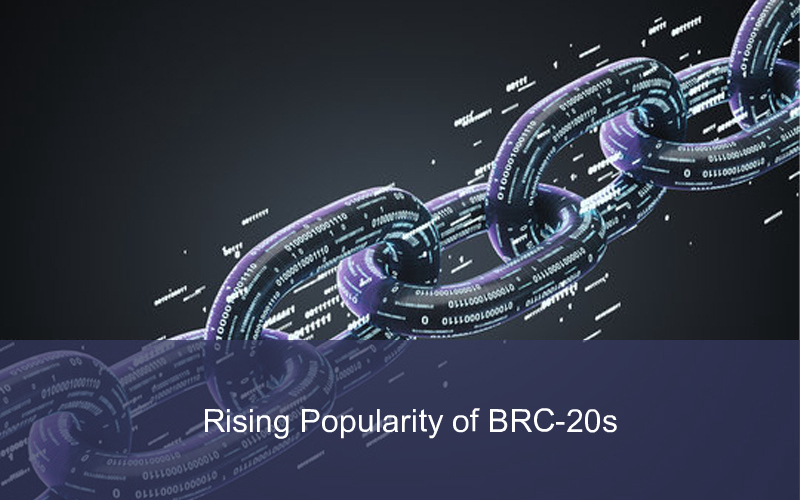Bitcoin's BRC-20 token standard has been gaining huge popularity especially over the last few years. On May 8, daily minting fees on BRC-20 increased to a record high of 255 BTC reported by Dune data. Since then, BRC-20-related transaction fees have been declining slowly over the next three days. On May 11, the fees dropped to 30 BTC, which displays a decline of 88% from the peak that was observed three days before. Furthermore, the transaction fees earned on May 11 accounted for around 15% of Bitcoin network’s total transaction fees accrued on the same day.
Meme coins have gained immense fame over the years, leading to a noticeable increase in the congestion of Ethereum and Bitcoin networks owing to their transactions. The BRC-20 token standard is based on the Bitcoin chain. It is a type of fungible token that utilizes two components for its successful functioning, that is, ‘Ordinals’ and ‘Inscriptions’. Ordinals are a system of numbering wherein a unique number is provided to each satoshi, or 0.00000001BTC, enabling their easier tracking and transfer from one to another. Additionally, “inscription” is an extra layer put on top of Ordinals to form tokens. These tokens are then used for constructing and managing contracts, minting, and transfers on the Bitcoin chain.
The BRC-20 token standard was first introduced on March 8 by Domo, a Twitter user. Presently, over 14,300 tokens based on BRC-20 are being used within the Bitcoin network and with an approximated 400 million tokens being used on Ethereum. As a consequence of the constant activity related to Ordinals and BRC-20s, the Bitcoin network has seen an extensive surge in its congestion levels. As per the data generated by Mempool, there are more than 287,000 transactions that are yet to be completed, and the limit of memory assigned to these transactions is fully utilized. This trend was further showcased when the market value of these tokens exceeded $1 billion, on May 9.
 James Wilson
James Wilson
- 2023-05-12
Bitcoin Network Congestion Increases with Increasing Popularity of BRC-20s
This article discusses the increasing popularity of Bitcoin's BRC-20 token standard, which led to a record high fees of 255 BTC. The fees returned to normal after just three days, and the Bitcoin network's congestion levels rose due to the increased activity of BRC-20s.

